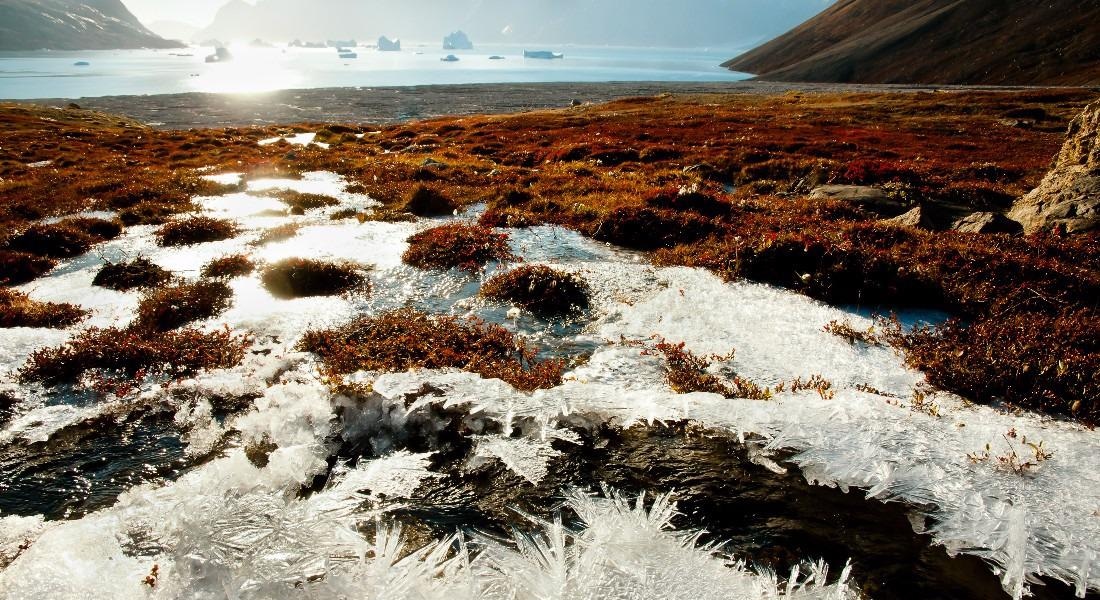Feb 10 2021
The increase in global temperatures has led to the thawing of the frozen Arctic soil, or permafrost, in the northern hemisphere and the release of CO2 stored inside it for thousands of years.

Image Credit: Getty.
The quantity of carbon stored in permafrost is predicted to be four times greater than the integrated amount of CO2 discharged by modern humans.
Findings of a study by an international research team, including a scientist from the University of Copenhagen among others, indicates that the newly found phenomenon will discharge even larger amounts of CO2 than once proposed from organic matter in permafrost—a pool of carbon earlier considered to be bound tightly and safely sequestered through iron.
The amount of stored carbon bound to iron and transformed to CO2 while being discharged is calculated to be somewhere between two and five times the amount of carbon discharged via anthropogenic fossil fuel emissions per year.
Iron Does Not Bind Organic Carbon After all
Scientists have known for a long time that microorganisms play a significant role in the CO2 release with the thawing of permafrost. Microorganisms that get stimulated when soil thaws transform dead plants and other organic materials into greenhouse gases, such as carbon dioxide, nitrous oxide and methane.
Mineral iron was thought to bind carbon even as permafrost thawed, however, new findings illustrate that bacteria disable the carbon trapping ability of iron, which leads to the release of enormous amounts of CO2.
What we see is that bacteria simply use iron minerals as a food source. As they feed, the bonds which had trapped carbon are destroyed and it is released into the atmosphere as greenhouse gas.
Carsten W. Müller, Associate Professor, Department of Geosciences and Natural Resource Management, University of Copenhagen
“Frozen soil has a high oxygen content, which keeps iron minerals stable and allows carbon to bind to them. But as soon as the ice melts and turns to water, oxygen levels drop and the iron becomes unstable. At the same time, the melted ice permits access to bacteria. As a whole, this is what releases stored carbon as CO2,” added Müller.
The research was published recently in the Nature Communications journal.
Absent from Climate Models
The team has investigated only a single bog area in Abisko, northern Sweden, but they have compared their findings with data from other parts of the northern hemisphere and anticipate that their new findings will be valid for other regions of permafrost across the globe.
This means that we have a large new source of CO2 emissions that needs to be included in climate models and more closely examined.
Carsten W. Müller, Associate Professor, Department of Geosciences and Natural Resource Management, University of Copenhagen
Although carbon stored in permafrost has a significant effect on the climate, scientists know very little regarding the mechanisms that govern whether carbon in soil is transformed into greenhouse gases.
The majority of climate research in the Arctic focuses on the amount of stored carbon and how sensitive it is to climate change. There is a great deal less of a focus on the deeper mechanisms which trap carbon in soil.
Carsten W. Müller, Associate Professor, Department of Geosciences and Natural Resource Management, University of Copenhagen
Scientists are unsure how much additional carbon from soil could possibly be discharged via this newly found mechanism. This requires closer investigation.
Journal Reference:
Patzner, M. S., et al. (2020) Iron mineral dissolution releases iron and associated organic carbon during permafrost thaw. Nature Communications. doi.org/10.1038/s41467-020-20102-6.